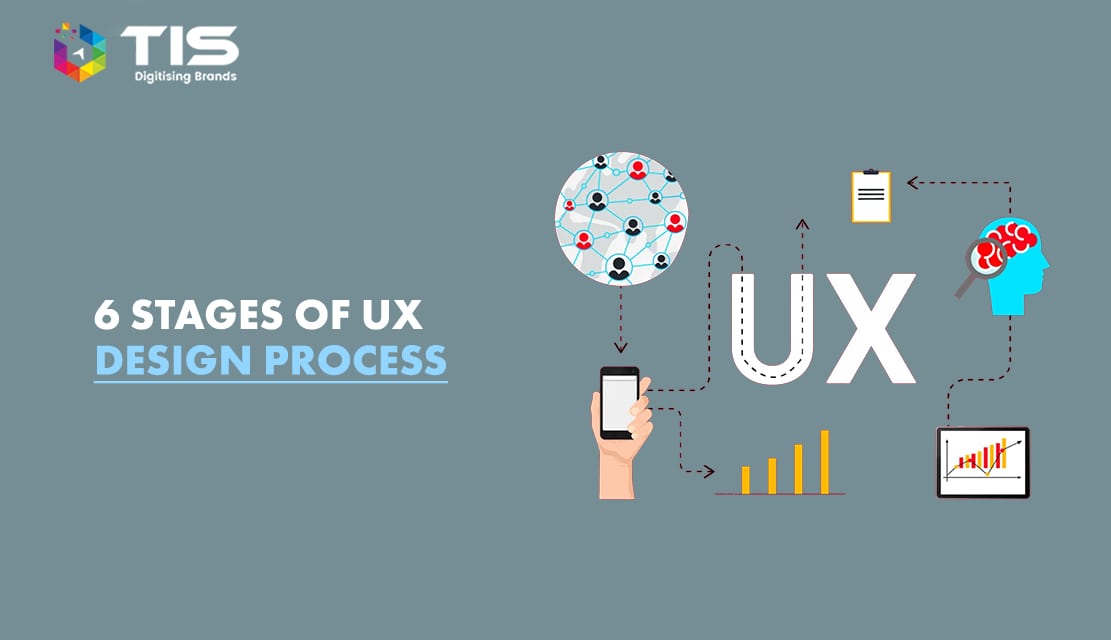
If there is one thing that is done unanimously in the UX industry and can still give you a distinctive competitive advantage, it is the UX (user experience) design process. The main objective of it is to understand and control the various elements and factors involved in the design process as a whole.
Developing an understanding of these elements gives you both – control over the whole process and helps you design better products that fit with your target users, niche markets, or business goals.
In this post, we dive deeper into the different aspects of UX design and outline a step-wise process for UX design, along with the methods to use during each phase.
User experience or UX refers to the value that you offer to your users when they are using your product. It primarily depends on enhancing user satisfaction by improving the accessibility, usability, and convenience when a user interacts with your product.
A well-executed UX process requires you to follow a user-centric approach and a defined strategy that enables you to develop simple, engaging, and intuitive experiences to wow the end-users.
The ideal approach for a successful UX design process, therefore, involves combining various aspects such as user experience, content, and structure, in a way that enables your business to accomplish the goals set.
The UX design process is an important methodology that, if followed correctly, can allow you to refine your user interfaces to be the ideal one possible for your business.
Without a well-defined and powerful UX design process, you substantially reduce your chances of creating a product that strikes a chord with end users.
The entire UI/UX design process can be divided into 6 key phases as discussed below –
Coming up with a strategy in the UX design process is primarily important because it helps you articulate the brand and the long-term vision of your organization.
A detailed strategy defining your UX project will shape the end-to-end goals of the project in terms of what you are hoping to achieve such as the best UX designs and the best ways to measure success.
Some of the techniques you can use during the strategy phase include –
Involves performing a detailed review of competitors’ websites, along with conducting user testing (of competing sites) to better understand the larger competitive landscape.
This includes holding conversations with the key contacts in the client organization related to funding, selling, or driving the product.
Involves thoroughly analyzing web or mobile usage data, and making subsequent recommendations.
Creating a snapshot document recording data for specific indicators about how well the product is performing across various important customer, process, financial, and people metrics.
Conducting thorough research is the second most integral aspect of the UX design process. Research is primarily done to understand more about the users, their goals, behaviors, motivations, and needs. Begin the process by thinking about the following questions –
User research also shows you how they currently navigate your system, where they come up against issues, and also how they feel when interacting with your product.
There are multiple tools available online to do surveys and collect ideas from users.
The main objective of the analysis phase is to draw deeper insights from data collected during the research phase. This process of capturing, organizing, and making inferences can help UX designers understand the requirements better.
Further, communicating the designer’s understanding back to end-users helps confirm that any assumptions being made during the process are relevant and valid.
The analysis phase of a UX design process usually includes –
A user persona is a fictional character that the UX design experts build to represent the typical users, their goals, skills, motivations, and frustrations.
A storyboard helps designers visualize the users’ actions and also the environment in which they take place. They can also be used in the ideation phase to help illustrate some of the design choices.
This phase of a UX design process is collaborative – that involves input and ideas from various stakeholders and iterative, and validates ideas and assumptions.
The key premise of the design phase is to build on the user feedback loop established in previous stages and put ideas in front of users, seek their feedback, refine them, and repeat the process.
The design phase typically includes –
The production phase is the stage where the UX design agency fleshes out the high-fidelity design, creates content and digital assets and a refined version of the product is validated with stakeholders and end-users through multiple user testing sessions.
At this stage, the role of the UX designer shifts from creating and validating ideas to collaborating with developers to master the vision.
Validation is one of the most essential steps in the UX design process as it can help you understand whether your design works for your users. The validation and testing phase typically begins after the high-fidelity design is ready since testing with high-fidelity designs offers more valuable feedback from both stakeholders and end-users.
Among the key activities that the validation phase of the UX design process involves are –
UX design is an extensive process where the one size fits all approach does not apply. However, regardless of the process you follow, the key aim of each UX design process is to develop a great product for your users. This is where a great web designing company differentiates itself from others.
Apart from following the steps mentioned above, it is important to identify what works the best for your own project, cut the clutter, and constantly work on your UX design process as your product evolves.
If you follow this guide, you will be able to design your website with usability, utility and desirability in mind. You must make sure to take your design decisions after doing thorough research so that you are confident enough to create designs that are beautiful and usable.